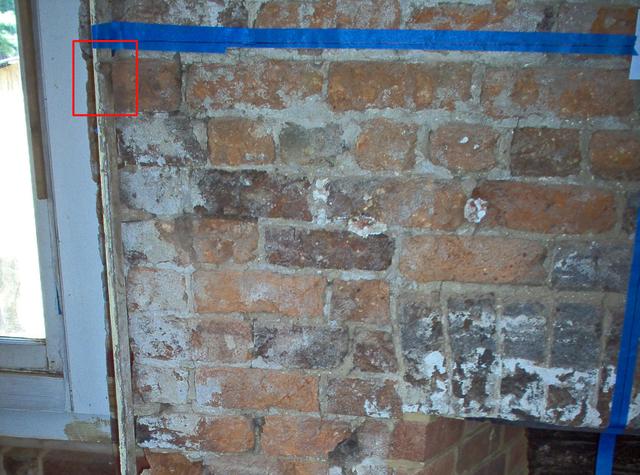
For the height of the chimneypiece, the Restoration Team turned to a surviving ca. 1812 corner bead. A small indentation in the corner bead revealed the height of the chimneypiece as well as a rough molding profile for its shelf. The molded profile would also give Wenger another very important clue to use when drafting the design of the chimneypiece. When looking at the other surviving ca. 1812 chimneypieces at Montpelier, as well as others built by Dinsmore and Neilson for other houses, it was found that they produced two distinct types of chimneypieces. Importantly, one type of chimneypiece had a molded shelf while the other type did not.

©Copyright 2002-2003
|
|
The red box highlights an indentation in a ca. 1812 corner bead that once held the molded edge of the missing chimneypiece's shelf. |







